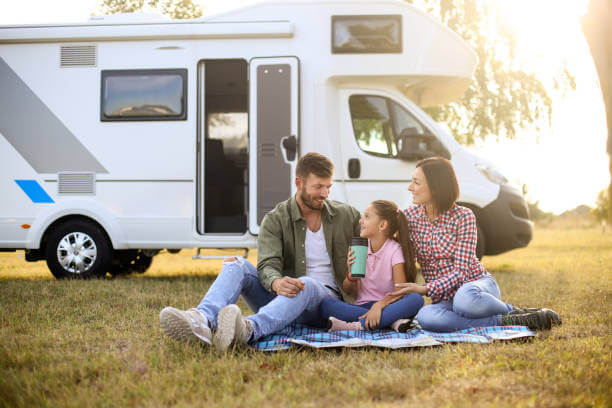Embarking on an RV adventure is undoubtedly thrilling, but it’s also a serious endeavor that demands careful preparation. You’ve loaded up your rig, adjusted your mirrors, and donned your road-trip attire, but there’s more to ensuring a safe and enjoyable journey than meets the eye. Before you put your RV into gear, there’s a checklist of vital tasks to complete, each playing a pivotal role in your travel experience. These aren’t just suggested actions; they’re non-negotiable measures for the safety of you, your companions, and your fellow travelers on the road. In this article, we delve into the key steps to take before every RV trip, so you can embark on your adventure with confidence, knowing that you’ve covered all the essential bases for a smooth and secure journey.
Essential Pre-RV
Camping Trip Checklist
With your rig prepped, tanked up, and road-ready, you’re eager to hit the highway. You’ve got your shades on, wearing those comfortable “road-trip” clothes, snacks within arm’s reach, and your trusty water bottle in the cup holder. It seems like you’re all set, but hold on just a minute! Before you embark on your journey, there are a few crucial tasks that demand your attention. These pre-RV trip checks are not just important; they are vital for your safety, the well-being of your fellow travelers, and anyone sharing the road with you. So, don’t skip these straightforward yet essential actions.
- Adjust Your Driving Throne
Before you turn the key, settle into the driver’s seat. Take a moment to ensure your seat is perfectly adjusted for your comfort. Check that you can effortlessly reach the foot pedals and gear shift. If you share your RV driving duties with someone who is joining you on your trip, double-check the seat positions. Even if you’re the sole pilot, making slight adjustments for maximum comfort can make a world of difference during long-haul journeys.
- Set the Steering Wheel
Position the steering wheel to your preference, ensuring it doesn’t obstruct your view through the windshield. Your line of sight to all the gauges on the dashboard should be clear.
- Master Your Mirrors
Your RV’s mirrors play a crucial role in your safety. There are two types: convex and flat.
- Convex Mirror: This curved mirror can provide visibility into three traffic lanes when correctly adjusted. You should see the side of your RV and a portion of its traffic lane, along with the adjacent two lanes. Adjust both driver and passenger side convex mirrors this way to reduce blind spots.
- Flat Mirror: Use flat mirrors to gauge distances behind you and monitor vehicles on either side of your rig. Position them to capture a fraction of your RV’s side, allowing the majority of your view to focus on the traffic around you. Set the rear horizon line around 3/4 up from the bottom for a better view of the road and less sky. Ensure the mirrors are correctly adjusted so that a car approaching from behind appears in your flat mirror before transitioning to the convex mirror.
- Light It Up
Every time before you hit the road, inspect your RV’s lights. It’s easier with a partner. Have one person outside while the other activates the truck and RV lights, signaling left and right turns, applying brakes, and activating emergency signals. Check your exterior lights to ensure they convey your intentions to other drivers.
- Have Your Vital Info Handy
Before you set off, post your RV’s dimensions and weight prominently on your dashboard. Keep your insurance card and contact details easily accessible inside your truck and RV. Don’t forget to carry an insurance card in your wallet or purse for quick access in case of an accident. If you have separate roadside assistance coverage, have those details on hand too.
- Weather and Road Conditions
Just before you head out, make a final check of the weather and road conditions. Stay alert for potential closures and detours on your planned route and adjust your plans accordingly. Ensure that both the driver and adult passengers are familiar with the route, and if you’re not alone, co-pilots can help by keeping an eye out for upcoming turns or interchanges.
- Confirm Reservations
If you’ve made reservations at a campground, call ahead to confirm your arrival time. If you anticipate a late arrival, notify the campground in advance. If circumstances dictate a change of plans, cancel your reservations promptly.
Now, with your checklist completed and the wheel chocks removed, you’re ready to hit the road. Stay safe, and may your RV journey be filled with adventure and unforgettable memories!
Join the E3 Camping Membership today and become a part of a vibrant community that shares your passion for RV adventure. Together, we can make your dreams of RVing and camping a reality, while embracing the spirit of empowerment. When you sign up, you get instant access to our magazines, 200+ lessons and courses to be a better camper and RVer, tools, product discounts, events, a HUGE community of campers and RVers around the country, E3TV episodes, articles, and many other amazing things.

